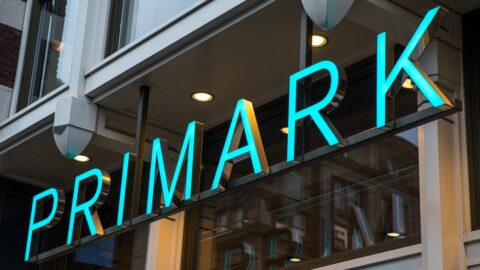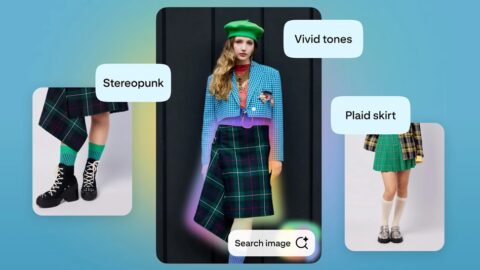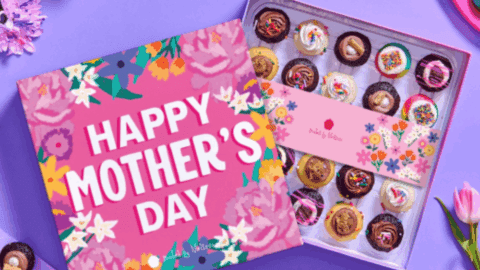This is Part 2 of the Retail TouchPoints Omnichannel Order/Pick-up/Delivery report. Part 1 appeared in the Jan. 28 newsletter.
Complete inventory visibility and sophisticated order management tools help retailers optimize product distribution to allow ordering, pick-up and delivery from any channel.
As many as 77% of retailers consider in-store inventory pick for in-store customer pick-up to be “very valuable,” according to a December 2013 survey report from Retail Systems Research (RSR), titled: Supply Chain Execution: Making Omnichannel Profitable. Another 56% also considered ship-to-store for consumer pick-up to be “very valuable.” However, only 36% and 29% of retailers, respectively, had implemented or planned to roll-out processes that allow it.
Advertisement
When it comes to supply chain and inventory destinations, “Retailers are reaching for the brass ring: Targeting fulfillment from the most profitable location as their primary omnichannel fulfillment opportunity,” noted RSR in the report. But without increased visibility across the network, achieving this goal will be difficult.
{loadposition TSHBAIAA022014} Retailers choosing to invest in advanced inventory solutions are reaping the benefits. Here are six examples:
- David’s Bridal enhances visibility into inventory availability information across all channels with supply chain commerce tools from Manhattan Associates. The solutions allow David’s Bridal to consolidate multichannel order and inventory data to ensure efficient and timely order fulfillment ― whether from DCs to stores and homes, or online to stores and homes. By pooling and governing availability of inventory across the e-Commerce and store distribution network, the retailer’s entire supply chain can service each customer’s specific needs.
{loadposition TSHBAIAA022014} “Our business is founded on offering brides the widest variety of products always delivered on time for her big day, no matter how she chooses to shop with us: Online, in our stores, or by phone,” said Caryn Furtaw, CIO at David’s Bridal. “It’s critical that we have one system we can rely on to provide inventory availability and manage orders across our network.
- Design Within Reach, a multichannel retailer of upscale furniture ― much of it imported from Europe ― requires clear inventory visibility to assure customer orders are delivered accurately and on time. “Our goal is to have a highly precise and complete in-stock omnichannel position,” said Bethany Kemp, VP of Technology and Information Systems at DWR, in an interview with Retail TouchPoints. “This goal underscores the competitive advantage we bring: Yes, customers can order European imports from another retailer, either online or in-store, but it may take them 16 weeks to receive it!”
Design Within Reach relies on technology from NetSuite to improve visibility into customers’ omnichannel orders and deliveries. The NetSuite order management platform helps the retailer attain the goal of improved in-stock inventory: It provides a clear view into order status, such as number of current European shipments, products included, where they are and when they will arrive.
- By offering buy online/pick up in-store, Thule increased its dealer base by 700%. Using Shopatron technology, the retailer of brand vehicle racks and carriers is delivering orders quicker via in-store pick-up. The technology “integrated our dealer network into the e-Commerce process to convert traffic from various branded web sites into increased sales for Thule and its authorized retailers,” said Steve Doviak, Internet Manager at Thule. “In fact, we have increased our dealer base from fewer than 100 to more than 700 local retailers servicing Thule online orders.”
Like Thule, as many as 52% of retailers currently offer a buy online/pick up in-store option, according to a Retail TouchPoints survey report that addressed omnichannel strategies.
-
A variety of product pick-up and delivery options are vital for Best Buy, the Retail TouchPoints report indicated, and often depend on the region of the country: “In the Pacific Northwest, for example, 40% of online sales in that area can be store pick-up. During the holidays that number can increase to 70% percent.” Best Buy relies on the Advanced Inventory Planning tool from Oracle to forecast replenishment need at the store level.
- Henry’s Camera, a Canadian omnichannel retailer of high-end cameras, launched a Reserve Online Pick Up In-store capability that utilizes a multi-location inventory management module from OrderDynamics. The tool allows customers to leverage the Henrys.com site to view product inventory at individual store levels. In a few simple steps, Henry’s customers can research products online then reserve them at the most convenient store location. In addition, the Henry’s staff can view customers’ online and in-store purchasing history and behavior profiles to help make appropriate upsell and cross-sell recommendations during the in-store pick-up process.
“Reserve In-Store represents our commitment to providing the most convenient and seamless omnichannel shopping experience possible for our customers,” said Ian Landy, President and CEO at Henry’s. “It also acts as a way for Henry’s to leverage inventory and expert staff at each of our retail stores. When customers come into our stores to buy an item they reserved online, they also have an opportunity to enjoy our in-store experience, large product inventory, and expert staff. This will lead to an even better shopping experience and ensure our customers get exactly what they want.”
- Ahold USA Stop & Shop, Giant Food, Giant Food Stores, Martin’s operates dozens of grocery stores under the Stop & Shop, Giant and Martin’s Food Market Stop & Shop, Giant Food, Giant Food Stores, Martin’sbrand names. In January 2014, the company announced 120 store pick-up points where customers can receive their online grocery orders without leaving their vehicles.
“The retail world is changing fast and fulfilling the needs of the connected customer is a crucial part of future growth,” said James McCann, COO at Ahold USA. The 120 pick-up points, compared to eight only a year ago, “represents great momentum and solid proof of our successful omnichannel execution.”
Do Customers Prefer Fast Or Free?
A myriad of omnichannel order/delivery options satisfies customer demand for acquiring items quickly. However, free shipping is far more attractive to Americans than fast shipping, according to research from Pitney Bowes. In an infographic previously published by Retail TouchPoints, Pitney Bowes found that shoppers preferred free shipping (77%) to fast shipping (19%).
Similarly, a recent study by Walker Sands found that consumers would be more likely to purchase products online if they shipped for free (80%) versus if they were delivered within one day (66%).
Free shipping continues to be every retailer’s “frenemy,” according to a Forrester report. “Shipping can be seen as both a friend and an enemy to retailers, incentivizing customers to transact via free offers on the one hand while incurring hard costs on the other,” the report indicated. “Unfortunately, retailers won’t resolve their conundrums around shipping costs in a hurry, as companies like Amazon.com and Zappos.com continue to set high customer expectations when it comes to shipping offers.”
Indeed, though free shipping costs consumers nothing, it is, of course, not free for the retailer, according to a Newgistics company blog: “To offset the cost of free shipping offers in such a competitive online marketplace, retailers must look to their operations budget or other internal budget. The selection of a shipping partner can benefit retailers beyond the moving of boxes [to include] incremental revenue streams as well, which can off-set costs in other areas to help recover some of the expense of offering ‘free shipping.’”
In addition, online retailers “should not look at the growing expectation of free shipping as a problem,” according to the blog, but as “an opportunity to hone their marketing strategy to encourage first time buyers and to build long-lasting relationships with satisfied customers.”
MasterCard recently partnered with Clarus Marketing Group to offer free shipping to card holders by cutting associated logistics costs. Echoing Amazon Prime, MasterCard has joined the payment networks using subscriptions to bring this free shipping model to eTailers across the web. The program removes the shipping burden from retailers, now including Best Buy, Kohl’s, Macy’s, QVC and Wal-Mart. Merchants’ transactions experiences remain the same, and no changes or technical updates to merchants’ web sites are required. Instead, consumers go through MasterCard for a shipping reimbursement.
“Free shipping has become a huge deciding factor in e-Commerce,” stated Tom Caporaso, CEO at Clarus. “Amazon Prime orders increased from $24.98 per order on average before joining the service to a whopping average of $75.31 after. Clearly free shipping is in high consumer demand and encourages more purchases.”
Whether the shipping choice is free, within the day or hour, or direct to stores and homes, increasingly sophisticated order/pick-up/delivery options are helping retailers uphold their omnichannel promise.
Click here to access a complimentary pdf of the complete two-part Omnichannel Order/Pick-Up/Delivery report.














